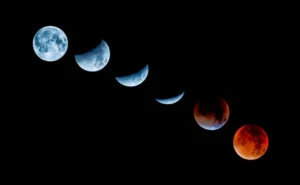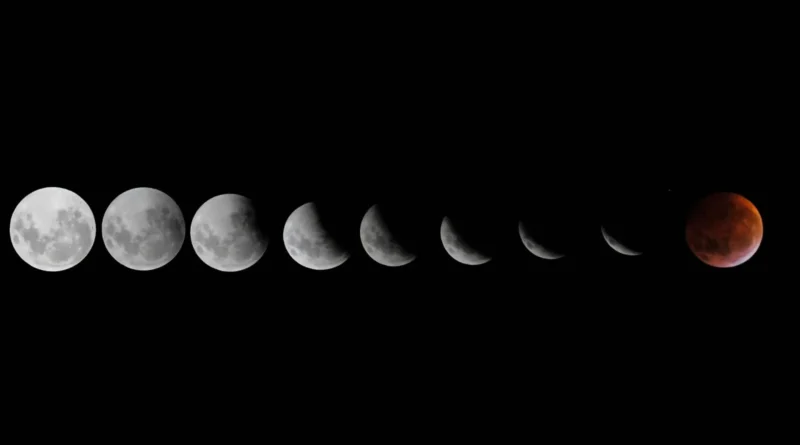The Cosmic Dance of Solar and Lunar Eclipses in 2024: A Celestial Spectacle
Contents
Introduction:
The 12 months 2024 of poised to provide a surprising celestial display with a sequence of sun & lunar eclipses fascinating sky watchers and astronomers alike. These cosmic events, taking place because of the difficult dance of celestial bodies, offer us with glimpses into the mysteries of our sun gadget and the wonders of the universe. In this complete article, we are able to delve deep into the science, significance, and cultural effect of sun and lunar eclipses in 2024, exploring their spell binding splendor and medical relevance.
Solar Eclipses in 2024:
Solar eclipses arise whilst the Moon passes among the Sun and Earth, quickly blockading out the Sun`s light. In 2024, there are high-quality sun eclipses:
1. Partial Solar Eclipse (April 20, 2024):
– This partial sun eclipse may be seen from components of North America, which includes the US and Canada.
– Observers withinside the eclipse route will enjoy a partial blockading of the Sun, developing a crescent-formed sun display.
– Safety precautions, together with the use of sun viewing glasses or oblique viewing methods, are critical whilst watching sun eclipses to shield the eyes from dangerous radiation.
2. Total Solar Eclipse (October 14, 2024):
– The general sun eclipse of October 14, 2024, is expected to be a main celestial event, with the route of totality crossing components of North America, which includes Mexico, the US, and Canada.
– During totality, whilst the Moon absolutely covers the Sun, visitors withinside the eclipse route will witness a panoramic sight, which includes the sun corona and sun prominences.
– Astronomy fanatics and researchers eagerly look ahead to this uncommon possibility to take a look at the Sun’s outer surroundings and phenomena throughout the quick length of totality.
Lunar Eclipses in 2024:
Lunar eclipses arise whilst the Earth comes among the Sun and the Moon, casting its shadow at the lunar floor. In 2024, there are massive lunar eclipses:
1. Total Lunar Eclipse (March 25, 2024):
– The general lunar eclipse of March 25, 2024, may be seen from diverse components of the world, which includes areas of Asia, Australia, North America, and South America.
– During totality, the Moon can also additionally tackle a reddish hue, generally called a “blood moon,” because of daylight refracted through Earth’s surroundings.
– Lunar eclipses provide possibilities for medical take a look at, which includes observations of the Moon’s floor and atmospheric situations throughout distinct stages of the eclipse.
2. Total Lunar Eclipse (November 18, 2024):
– The 2nd general lunar eclipse of 2024 will arise on November 18, fascinating observers in areas consisting of Asia, Australia, North America, and South America.
– Sky gazers can witness the Moon`s sluggish adventure into Earth’s shadow, experiencing the enchanting spectacle of a totally eclipsed Moon earlier than it emerges into the penumbral phase.
– Cultural importance and symbolic interpretations of lunar eclipses upload intensity to those celestial activities, resonating throughout numerous cultures and traditions.
Scientific Exploration and Observations:
Solar and lunar eclipses function precious possibilities for clinical exploration and observations. Astronomers and researchers make use of those activities to observe diverse elements of celestial bodies, including:
1. Solar Phenomena:
– Solar eclipses permit scientists to observe the Sun’s outer atmosphere, sun prominences, and the sun corona, contributing to our know-how of sun dynamics and magnetism.
– Advanced telescopes and imaging strategies permit for certain observations of sun functions at some point of eclipses, improving our know-how of sun physics.
2. Lunar Composition and Atmosphere:
– Lunar eclipses offer insights into the Moon’s floor composition, geological functions, and atmospheric conditions.
– Spectroscopic evaluation and imaging strategies at some point of lunar eclipses resource in analyzing lunar minerals, temperature variations, and the presence of factors at the Moon.

Cultural Significance and Interpretations:
Solar and lunar eclipses keep cultural importance and interpretations throughout civilizations, influencing myths, folklore, and religious beliefs. Some cultural elements include:
1. Mythological Narratives:
– Many cultures have myths and tales related to eclipses, depicting celestial battles, transformations, or symbolic representations of cosmic forces.
– These narratives replicate human fascination with celestial activities and the mixing of astronomy into cultural storytelling.
2. Symbolism and Rituals:
– Eclipses are regularly interpreted symbolically, representing subject matters of renewal, transformation, and celestial alignments.
– Rituals, ceremonies, and astronomical observations at some point of eclipses are regularly occurring in diverse cultures, highlighting the interconnectedness of humanity and the cosmos.
Future Perspectives and Public Engagement:
As we appearance beforehand to the sun and lunar eclipses of 2024 and beyond, there are possibilities for public engagement, clinical outreach, and academic initiatives:
1. Public Observation Events:
– Astronomical societies, observatories, and academic establishments can prepare public remark activities for sun and lunar eclipses, offering secure viewing stories and academic resources.
– Virtual outreach packages and livestreams can attain a worldwide audience, fostering hobby in astronomy and celestial phenomena.
2. Citizen Science Projects:
– Citizen technological know-how tasks associated with sun and lunar eclipses inspire public participation in clinical statistics collection, consisting of tracking eclipse timings, sky conditions, and lunar observations.
– Collaborative efforts among scientists and citizen scientists make a contribution to ongoing studies and public engagement in astronomy.




